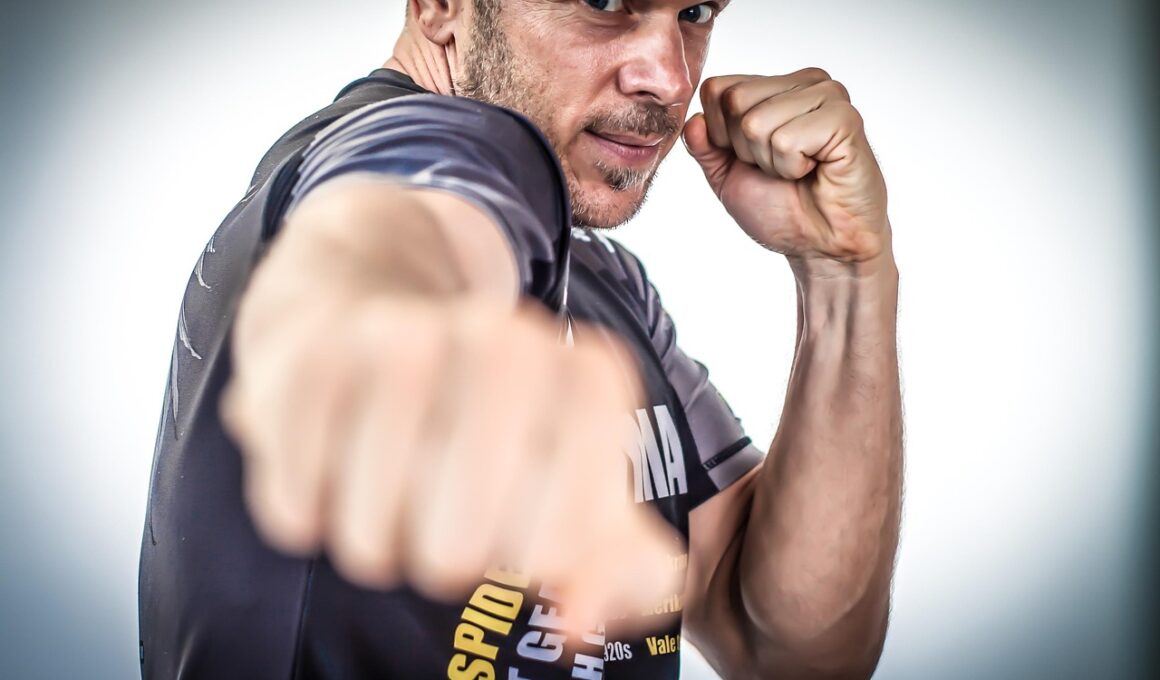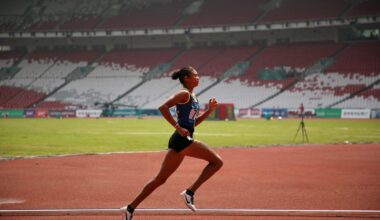Understanding Military Combatives
Military combatives blend traditional martial arts with practical, combat-oriented techniques designed for real-world scenarios. The primary focus is to ensure effectiveness in a high-pressure environment, emphasizing efficiency over unnecessary movement. A fundamental principle of military combatives involves the concept of situational awareness. This awareness enables practitioners to assess their surroundings, recognizing potential threats and determining the best course of action. Techniques often drawn from various martial arts styles are adapted for effectiveness in military situations, particularly in close-quarter combat. Through rigorous training, soldiers become adept at executing powerful strikes, holds, and disengages quickly. Instructors break down movements into digestible drills, fostering muscle memory and instinctual responses in their students. Furthermore, mental conditioning plays a significant role in military combatives, as soldiers learn to manage stress and remain calm under pressure. Self-discipline and respect for one’s opponent are also instilled, creating well-rounded individuals prepared for combat and peacekeeping roles. The training extends beyond mere physical techniques; it prepares military personnel to think strategically in chaotic environments, ultimately ensuring their survival and that of their comrades. A robust understanding of these principles is essential for mastering military combatives effectively.
At the core of military combatives principles lies the concept of leverage and body mechanics. Leveraging one’s body weight and position can often turn the tide in a confrontation, allowing a smaller person to overcome a larger adversary. This approach emphasizes efficiency in every movement, ensuring that energy is conserved during exchanges. Practitioners learn to utilize angles and positioning to maximize their impact while minimizing vulnerability. Essential techniques include joint locks, throws, and escapes from holds, designed to incapacitate an opponent quickly. The fluidity of movement within military combatives also allows for improvisation, crucial in unpredictable combat scenarios. Instructors stress the importance of adaptability, teaching soldiers how to modify techniques as situations evolve. Moreover, training often incorporates various defensive strategies to counter potential attacks, sharpening reflexes and response times. Key elements such as footwork, timing, and distance management are drilled repeatedly to ensure proficiency. Regular sparring sessions provide practical experience, enabling soldiers to apply what they’ve learned in a controlled environment. Ultimately, these principles not only enhance a soldier’s combat skills but also contribute to their overall confidence in handling dangerous situations.
Application of Techniques
Implementing military combatives techniques requires both mental and physical preparedness. Successful application involves split-second decision-making, as combat encounters can occur with little warning. Soldiers are trained to recognize cues from their opponents, allowing them to anticipate actions and react accordingly. This anticipatory skill is enhanced through extensive practice and engagement in realistic scenarios that mimic actual combat experiences. The use of protective gear during training sessions helps soldiers explore techniques without the risk of injury. Furthermore, the psychological aspect of combatives is critical. Soldiers are conditioned to remain composed, suppressing fear and anxiety that may arise in high-pressure situations. Techniques learned must be committed to memory, transforming them into instinctual responses. Additionally, knowledge of anatomy serves as a powerful tool, enabling soldiers to target specific vulnerable areas effectively. This understanding demonstrates why strikes to pressure points or joint manipulations are frequently emphasized. Rigorous sparring matches and drills foster teamwork, teaching soldiers to rely on their comrades. Ultimately, the goal of military combatives training is to create versatile fighters who exhibit both strength and intelligence in their actions, significantly improving mission success rates.
Another vital aspect of military combatives is the integration of psychological conditioning in training regimens. Combat is not solely a physical contest; it also tests mental fortitude and resilience. Through various drills and scenarios, soldiers learn to manage their emotions and stay focused amidst chaos. Stress inoculation techniques are deployed to prepare soldiers for the uncertainty of combat, simulating high-pressure situations that may lead to panic. This preparation helps build mental toughness, allowing soldiers to maintain clarity when faced with immediate threats. Furthermore, learning to view conflict through a tactical lens encourages a more strategic approach. Practiced mindfulness techniques can aid soldiers in maintaining control over their bodies and minds during confrontation. Resilience training also emphasizes recovery, teaching soldiers how to cope with physical and mental fatigue effectively. These principles foster a sense of camaraderie among soldiers, as they learn to support one another through their challenges. Ultimately, understanding the psychological dimensions of combat is as crucial as mastering physical techniques. The synergy of strength, strategy, and mental acuity becomes indispensable in effective military combatives operations.
The Role of Training Drills
Training drills are the foundation upon which military combatives skills are developed and refined. Consistency in practice is crucial; skill enhancement comes through repetitive and focused training sessions. Drill exercises, ranging from basic movements to complex scenarios, are meticulously designed to build muscle memory and tactical awareness. Soldiers engage in structured repetitions, allowing them to internalize techniques thoroughly. Variability in drills, such as incorporating different training partners, ensures adaptability and exposure to various fighting styles. Realistic scenarios help soldiers apply techniques under pressure, preparing them for unpredictable combat environments. In addition, instructors utilize feedback, providing insights into performance improvement that aids individual growth. Pairing physical training with situational exercises reinforces the importance of awareness and adaptability. Periodic assessments help gauge progress, fostering a culture of constant performance enhancement. Training does not solely focus on physicality; emphasis on tactical discussions helps soldiers understand the reasons behind movements. By embedding strategical thinking into the training regimen, soldiers build a solid foundation of combative principles. Ultimately, consistent practice of drills sharpens combat readiness, instilling confidence that translates into operational efficiency on the battlefield.
Another critical element in the realm of military combatives is the importance of drilling various combat scenarios repeatedly. This principle allows soldiers to encounter and navigate diverse combat situations, adapting to varying circumstances efficiently. By simulating real-world scenarios, soldiers gain experience in decision-making under stress, honing their ability to choose effective strategies rapidly. Incorporating realistic combat engagements during practice sessions prepares soldiers to face anxiety-inducing circumstances head-on, reducing the likelihood of panic during actual conflicts. Modular training, which includes a combination of striking, grappling, and weapon techniques, enhances overall readiness. Emphasizing versatility in training ensures soldiers can handle encounters with skill regardless of the situation. Each training session lays the groundwork for building strength, both physically and mentally, reinforcing soldiers’ confidence. Additionally, instructors encourage teamwork throughout drills, teaching soldiers to rely on each other to succeed in combat scenarios. Engaging in peer assessments fosters a supportive atmosphere where everyone grows collectively. Ultimately, the value of practicing diverse scenarios cannot be overstated, as it cultivates adaptive practitioners who remain calm and collected amidst chaos, thereby improving mission effectiveness and team cohesion.
Combatives in Modern Military
The evolution of military combatives reflects changing warfare landscapes, adapting techniques to contemporary challenges faced by armed forces. As conflict scenarios diversify, so too must the skill sets of soldiers in the field. Modern military combatives emphasize blended systems, integrating techniques from traditional martial arts with current tactics. The training focuses on situations encountered by troops in areas ranging from urban environments to asymmetric warfare. Adaptability remains paramount; soldiers are taught how to adjust techniques based on evolving engagement rules and operational environments. This modernization incorporates insights gleaned from previous conflicts, ensuring that lessons learned inform current training strategies. Krav Maga and Brazilian Jiu-Jitsu are just examples of martial arts influencing contemporary military combatives, highlighting adaptability and practicality. Engaging in joint exercises with other military branches also enriches training, fostering an exchange of techniques and strategies. Moreover, technological advancements, including simulation and augmented reality training, contribute to skill refinement while enhancing safety during practice. As modernization continues to drive change in military combatives, ongoing assessment and adjustments ensure that soldiers maintain peak readiness to address any challenges they may face while deployed.
Ultimately, the principles behind military combatives encompass a holistic approach to training. This approach ensures that the development of both physical and mental skills reinforces each other, preparing soldiers for the complexities of combat. Understanding dynamics such as aggression, fear, and self-control empowers soldiers to respond effectively in pressure-filled environments. Moreover, establishing a foundation of essential skills allows for continual improvement and adaptation. The emphasis on the psychological aspects of combatives extends beyond the battlefield, instilling core values such as discipline, respect, and teamwork. Such virtues foster an environment where soldiers support each other, further enhancing overall efficiency during missions. Encouraging self-reflection and open communication among team members is essential for collective growth. As military combatives evolve, continuous development in techniques and strategies will address future challenges. The commitment to ongoing learning will foster an elite cadre of soldiers equipped with the skills necessary to navigate unpredictable situations. This holistic perspective underscores the enduring relevance of military combatives principles, ensuring they remain a pivotal aspect of military training and operational success in the coming years.


